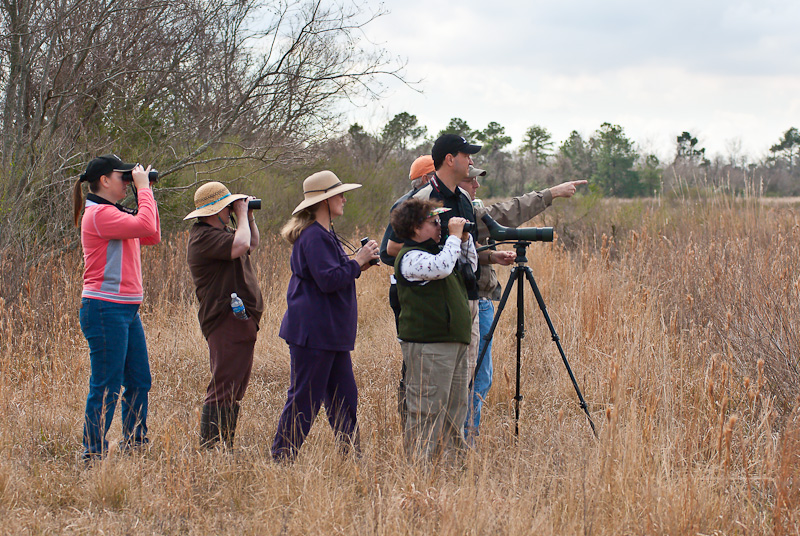View Programs and Tools that could be used for Developing Nature Tourism Activity
What is Nature Tourism?
| Nature tourism is defined as “discretionary travel to natural areas that conserves the environmental, social, and cultural values while generating an economic benefit to the local community”. |
Nature tourism gives landowners a means to profit from conserving and managing their natural areas for recreation. As visitors enjoy the Texas’ natural sights, local communities also benefit from tourist revenue.
Fishing and hunting are traditional nature tourism activities, but bird watching, hiking and backpacking, horseback riding, camping, rock climbing, paddling, photography, and other enjoyable past times are a part of the nature tourism industry.
The Texas Upper Gulf Coast is of great importance to birds, bird watchers and photographers because it is on the migration path of the Pacific and Atlantic Americas Flyways. The bays and estuaries are winter destinations or stopovers for migrating birds as they make the long passage between summer and winter habitat.
Farms and ranch owners are diversifying their income by incorporating nature tourism into daily or seasonal operations. Agritourism may be developed alongside nature tourism on ranch and farm land. Hay rides, Christmas tree farms, pumpkin patches, corn mazes, and chuck wagon cook offs are examples of agritourism implemented on farms and ranches around Texas.
The Value of Nature Tourism
According to research by the USDA Forest Service, bird watching activities draw over 81 million participants. A 1999 study showed that visitors to the Great Texas Coastal Birding Trail’s central portion devoted 31 days per year to bird and wildlife viewing on the trail. They spent on average $78 per day, or a total of $2,452 during the year.1 According to a USFWS a a study on bird watching, trip- and equipment-related expenditures for birding in the US in 2011 totaled $40.9 billion dollars. This expenditure resulted in $107 billion in total industry output, 666,000 jobs, and distributed $13 billion in local, state, and national economies.
Nature tourism is dependent on a robust natural environment. Enhancing wetlands and forests for wildlife on private land increases appeal to tourists. Land full of history and natural beauty make Texas unique and a desirable destination. In 2011, state residents and nonresidents spent $6.2 billion on wildlife recreation in Texas.
1. Eubanks, Ted and John Stoll. 1999. Avitourism in Texas: Two Studies of Birders in Texas and Their Potential Support for the Proposed World Birding Center. Texas Parks and Wildlife Contract No. 44467.
Learn about Nature Tourism from the Experts
Today there are many resources available to those with an interest in researching and implementing conservation practices on their land and joining the nature tourism industry. The following sites host a wealth of information on the ins and outs of the business, success stories, and how to get started.
Texas Parks and Wildlife Department
Programs and Tools that could be used for Developing Nature Tourism Activity
Click on a program below to learn more
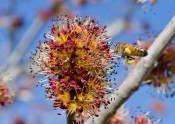 Agricultural Conservation Easement Program’s Wetland Reserve Easements - CEP WRE, created in the 2014 Farm Bill is the newest version of the previously authorized Wetlands Reserve Program. Under ACEP WRE, the Natural Resources Conservation Service (NRCS) provides financial and technical support to private landowners and Indian tribes to protect, enhance, or restore wetlands. A wetland reserve easement is used to accomplish this protection. Read More →
Agricultural Conservation Easement Program’s Wetland Reserve Easements - CEP WRE, created in the 2014 Farm Bill is the newest version of the previously authorized Wetlands Reserve Program. Under ACEP WRE, the Natural Resources Conservation Service (NRCS) provides financial and technical support to private landowners and Indian tribes to protect, enhance, or restore wetlands. A wetland reserve easement is used to accomplish this protection. Read More → AgriLife Extension Program - Texas A&M AgriLife Extension Service The AgriLife Extension Program, a part of Texas A&M AgriLife Extension Service, is an education agency with a statewide network of professional educators and volunteers. AgriLife presents research-based education programs on a wide variety of topics from 4-H Youth Development to Disaster Management. Courses of interest to wetland owners may include restoration and conservation of wildlife habitat, wildlife and fisheries management, water use efficiency, watershed health and protection, and wetland restoration. The AgriLife Extension Program website offers online courses and job training, access... Read More →
AgriLife Extension Program - Texas A&M AgriLife Extension Service The AgriLife Extension Program, a part of Texas A&M AgriLife Extension Service, is an education agency with a statewide network of professional educators and volunteers. AgriLife presents research-based education programs on a wide variety of topics from 4-H Youth Development to Disaster Management. Courses of interest to wetland owners may include restoration and conservation of wildlife habitat, wildlife and fisheries management, water use efficiency, watershed health and protection, and wetland restoration. The AgriLife Extension Program website offers online courses and job training, access... Read More →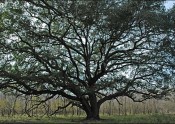 Carbon Storage and Credits: Landowner/Developer and Aggregators - Various Private and Nonprofit Entities Choosing a Marketplace for Carbon Trade No one single program deals with carbon offset credits. One branch of the carbon market is the compliance market where carbon emitters are required to offset their emissions by local, state, federal, or international policy. The other branch of the carbon market is the voluntary market where individuals and businesses volunteer to purchase carbon offsets in order to reduce their greenhouse gas emission impacts. There are several marketplaces (often called exchanges) for buyers and sellers of carbon... Read More →
Carbon Storage and Credits: Landowner/Developer and Aggregators - Various Private and Nonprofit Entities Choosing a Marketplace for Carbon Trade No one single program deals with carbon offset credits. One branch of the carbon market is the compliance market where carbon emitters are required to offset their emissions by local, state, federal, or international policy. The other branch of the carbon market is the voluntary market where individuals and businesses volunteer to purchase carbon offsets in order to reduce their greenhouse gas emission impacts. There are several marketplaces (often called exchanges) for buyers and sellers of carbon... Read More →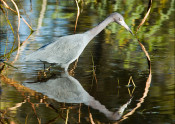 Conservation Stewardship Program (CStP) - USDA Natural Resources Conservation Service (NRCS) The Conservation Stewardship Program (CStP) is a voluntary conservation program administered by US Department of Agriculture (USDA) Natural Resources Conservation Service (NRCS). The program’s mission is to assist agricultural producers in maintaining and enhancing their existing conservation efforts, especially in relation to Texas’ program priorities: water quantity, soil erosion, and plant health and condition. The theme for CStP is “payment for performance“. Eligible lands include privately owned and Tribal agricultural lands, croplands, pasturelands, rangelands, grasslands, and nonindustrial private forest land. This includes... Read More →
Conservation Stewardship Program (CStP) - USDA Natural Resources Conservation Service (NRCS) The Conservation Stewardship Program (CStP) is a voluntary conservation program administered by US Department of Agriculture (USDA) Natural Resources Conservation Service (NRCS). The program’s mission is to assist agricultural producers in maintaining and enhancing their existing conservation efforts, especially in relation to Texas’ program priorities: water quantity, soil erosion, and plant health and condition. The theme for CStP is “payment for performance“. Eligible lands include privately owned and Tribal agricultural lands, croplands, pasturelands, rangelands, grasslands, and nonindustrial private forest land. This includes... Read More →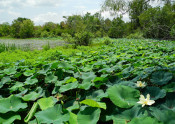 Environmental Quality Incentives Program (EQIP) - USDA Natural Resources Conservation Service (NRCS) EQIP About EQIP The Environmental Quality Incentives Program (EQIP) is a voluntary conservation program administered by the Natural Resources Conservation Service (NRCS). The program’s mission is to promote the compatibility of agricultural production, forest management, and environmental conservation. Financial and technical assistance are provided to enrolled landowners to implement conservation practices (structural and management) on eligible lands. Eligible lands include cropland, non-industrial private forestland, pastureland, ranchland, and other types of farm land. Applicants for an EQIP contract must control or own the... Read More →
Environmental Quality Incentives Program (EQIP) - USDA Natural Resources Conservation Service (NRCS) EQIP About EQIP The Environmental Quality Incentives Program (EQIP) is a voluntary conservation program administered by the Natural Resources Conservation Service (NRCS). The program’s mission is to promote the compatibility of agricultural production, forest management, and environmental conservation. Financial and technical assistance are provided to enrolled landowners to implement conservation practices (structural and management) on eligible lands. Eligible lands include cropland, non-industrial private forestland, pastureland, ranchland, and other types of farm land. Applicants for an EQIP contract must control or own the... Read More →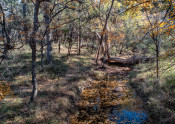 Forest Legacy Program (FLP) - Texas A&M Forest Service (TFS) About the Forest Legacy Program The Forest Legacy Program (FLP), administered by the Texas A&M Forest Service, the State of Texas, and USDA Forest Service, is a voluntary program which purchases conservation easements on forestland voluntarily offered for purchase by private landowners. Protecting priority forests from conversion to non-forested land use is the program’s goal. Forested wetland conservation is an aspect of this program. Eligible land must be in the Forest Legacy target area. Landowners must have clear title, be willing to permanently... Read More →
Forest Legacy Program (FLP) - Texas A&M Forest Service (TFS) About the Forest Legacy Program The Forest Legacy Program (FLP), administered by the Texas A&M Forest Service, the State of Texas, and USDA Forest Service, is a voluntary program which purchases conservation easements on forestland voluntarily offered for purchase by private landowners. Protecting priority forests from conversion to non-forested land use is the program’s goal. Forested wetland conservation is an aspect of this program. Eligible land must be in the Forest Legacy target area. Landowners must have clear title, be willing to permanently... Read More →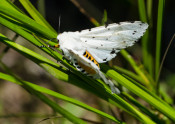 Landowner Incentive Program - Texas Parks and Wildlife Department Landowner Incentive Program (LIP) The Landowner Incentive Program (LIP) is a voluntary conservation program administrated by Texas Parks and Wildlife Department and funded through the US Fish and Wildlife Service (USFWS) Partners for Fish and Wildlife Program, National Fish and Wildlife Foundation, and others. LIP provides financial assistance to landowners who wish to implement conservation practices, particularly for activities benefiting rare or at-risk species and valuable riparian areas and watersheds. LIP is a reimbursement program. Landowners will receive payment upon completion of the... Read More →
Landowner Incentive Program - Texas Parks and Wildlife Department Landowner Incentive Program (LIP) The Landowner Incentive Program (LIP) is a voluntary conservation program administrated by Texas Parks and Wildlife Department and funded through the US Fish and Wildlife Service (USFWS) Partners for Fish and Wildlife Program, National Fish and Wildlife Foundation, and others. LIP provides financial assistance to landowners who wish to implement conservation practices, particularly for activities benefiting rare or at-risk species and valuable riparian areas and watersheds. LIP is a reimbursement program. Landowners will receive payment upon completion of the... Read More →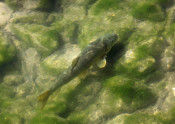 National Fish Passage Program - US Fish and Wildlife Service (USFWS) Dams in Texas According to the US Army Corps of Engineer’s National Inventory of Dams, Texas has over 7,000 dams, more than any other state. Most dams in Texas are privately owned, low-hazard earthen dams built between 1950 and 1989. The amount of damming along Texas waterways has led to freshwater stream habitat fragmentation. Aquatic species which migrate along the streams for spawning and other life cycle events are impeded by the obstructions. Today, many of the dams are obsolete and only... Read More →
National Fish Passage Program - US Fish and Wildlife Service (USFWS) Dams in Texas According to the US Army Corps of Engineer’s National Inventory of Dams, Texas has over 7,000 dams, more than any other state. Most dams in Texas are privately owned, low-hazard earthen dams built between 1950 and 1989. The amount of damming along Texas waterways has led to freshwater stream habitat fragmentation. Aquatic species which migrate along the streams for spawning and other life cycle events are impeded by the obstructions. Today, many of the dams are obsolete and only... Read More →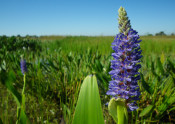 Private Lands Assistance via Texas Parks and Wildlife Department (TPWD) - Texas Parks and Wildlife Department TPWD provides technical assistance, free of charge to land managers who wish to incorporate wildlife management practices into present and future land use decisions. Upon request, a TPWD wildlife biologist will meet with the landowner to perform an ecological assessment of the property and discuss the landowner’s management goals. The wildlife biologist will: provide the landowner with tailored recommendations in the form of a written management plan and demonstrate proper record keeping for wildlife management progress detail and demonstrate wildlife population survey techniques... Read More →
Private Lands Assistance via Texas Parks and Wildlife Department (TPWD) - Texas Parks and Wildlife Department TPWD provides technical assistance, free of charge to land managers who wish to incorporate wildlife management practices into present and future land use decisions. Upon request, a TPWD wildlife biologist will meet with the landowner to perform an ecological assessment of the property and discuss the landowner’s management goals. The wildlife biologist will: provide the landowner with tailored recommendations in the form of a written management plan and demonstrate proper record keeping for wildlife management progress detail and demonstrate wildlife population survey techniques... Read More →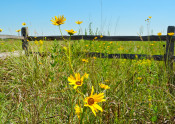 Purchase of Conservation Easements - Various Land Trust and Government Agencies Conservation easements often involve the donation of development rights of land. This donation is often used to obtain a tax deduction. However, in some cases, the development rights of land can be purchased by a willing land trust or government program for a one-time cash payment. Purchased conservation easements are also known as the purchase of development rights (PDRs). If there is funding available for the PDRs, the purchase price is often less than the value of the full value of the... Read More →
Purchase of Conservation Easements - Various Land Trust and Government Agencies Conservation easements often involve the donation of development rights of land. This donation is often used to obtain a tax deduction. However, in some cases, the development rights of land can be purchased by a willing land trust or government program for a one-time cash payment. Purchased conservation easements are also known as the purchase of development rights (PDRs). If there is funding available for the PDRs, the purchase price is often less than the value of the full value of the... Read More →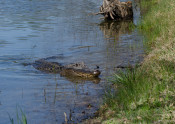 Tax Deduction via Donation of Conservation Easement - IRS What is a Conservation Easement? A conservation easement is a voluntary legal agreement between a property owner and a qualified entity (public agency or private conservation organization/non-profit), which will restrict the future land uses of a property to protect its natural and ecological qualities. Conservation easements can permanently protect land from development while the landowner continues to own the land. Conservation easements are designed with the unique characteristics of the land and land use goals of the landowner in mind. Conservation easements can protect land while still... Read More →
Tax Deduction via Donation of Conservation Easement - IRS What is a Conservation Easement? A conservation easement is a voluntary legal agreement between a property owner and a qualified entity (public agency or private conservation organization/non-profit), which will restrict the future land uses of a property to protect its natural and ecological qualities. Conservation easements can permanently protect land from development while the landowner continues to own the land. Conservation easements are designed with the unique characteristics of the land and land use goals of the landowner in mind. Conservation easements can protect land while still... Read More →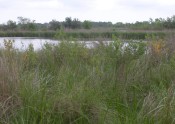 Texas Coastal Program - US Fish and Wildlife Service (USFWS) The Coastal Program assists with funding for coastal habitat projects. The Coastal Program partners with Federal programs, State agencies, Tribal and local governments, non-profit organizations, businesses, industry, land trusts, and private landowners who wish to fulfill habitat conservation goals on their land. The Coastal Program is a reimbursement program. The landowner is not reimbursed for the cost-share portion of the project cost until after the project is completed. Cooperative partnerships are emphasized by the Coastal Program. Coastal Program partners, known as cooperators,... Read More →
Texas Coastal Program - US Fish and Wildlife Service (USFWS) The Coastal Program assists with funding for coastal habitat projects. The Coastal Program partners with Federal programs, State agencies, Tribal and local governments, non-profit organizations, businesses, industry, land trusts, and private landowners who wish to fulfill habitat conservation goals on their land. The Coastal Program is a reimbursement program. The landowner is not reimbursed for the cost-share portion of the project cost until after the project is completed. Cooperative partnerships are emphasized by the Coastal Program. Coastal Program partners, known as cooperators,... Read More →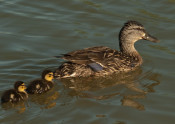 Texas Prairie Wetlands Project - Ducks Unlimited The Texas Prairie Wetlands Project (TPWP) is a partnership between Ducks Unlimited, Texas Parks and Wildlife Department, USDA Natural Resources Conservation Service, and U.S. Fish and Wildlife Service. The TPWP mission is to create overwintering habitat for waterfowl and improve health and survival rates before migration in the spring. TPWP works with private landowners in 28 counties on the Texas Gulf Coast to restore and enhance existing wetlands and to create new wetlands. TPWP provides technical assistance for surveying, engineering, and designing a wetland project and... Read More →
Texas Prairie Wetlands Project - Ducks Unlimited The Texas Prairie Wetlands Project (TPWP) is a partnership between Ducks Unlimited, Texas Parks and Wildlife Department, USDA Natural Resources Conservation Service, and U.S. Fish and Wildlife Service. The TPWP mission is to create overwintering habitat for waterfowl and improve health and survival rates before migration in the spring. TPWP works with private landowners in 28 counties on the Texas Gulf Coast to restore and enhance existing wetlands and to create new wetlands. TPWP provides technical assistance for surveying, engineering, and designing a wetland project and... Read More →
